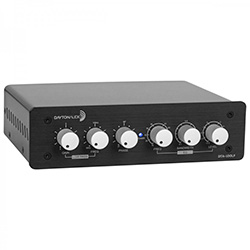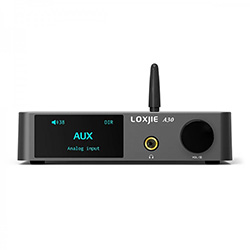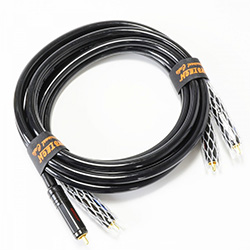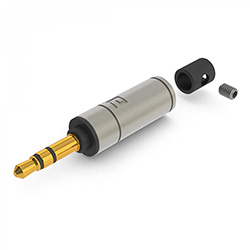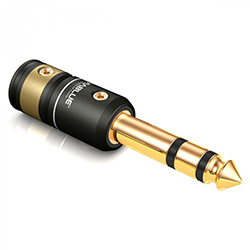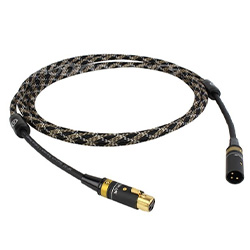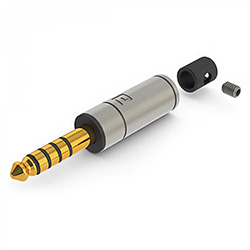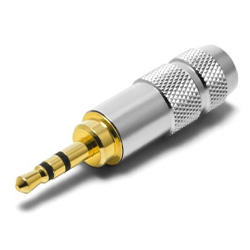New Customer?
Create your accountNo products
Prices are tax included
Audio signals: Mono, Stereo, Balanced, Unbalanced

Mono, stereo, balanced, unbalanced... Have you ever heard these terms used to define an audio signal, but don't know what they mean or how to make sense of them? Then you've come to the right place! Discover the history of recording and broadcasting mono and stereo audio signals, and the difference between symmetrical and asymmetrical connections.
A look at the history of audio signals: recording and broadcasting
The birth of audio recording and monophonic signal
Mono sound was logically the first to appear. This goes back to the first audio recording and playback technologies. To understand this, we need to go back to the 19th century, in 1877, with the invention of Thomas Edison's phonograph, a descendant of the phonotaugraphe, the French invention of Edouard-Leond Scott de Martinville. The phonograph was the very first device capable of recording and broadcasting an audio signal using a purely mechanical process. The first recording ever made is thought to be of the nursery rhymes Mary Had a Little Lamb and Old Mother Hubbard, engraved on tin foil and playable on the phonograph. The rather impractical phonograph was later replaced by the gramophone developed by a certain Émile Berliner. The latter can be considered the direct ancestor of the vinyl turntable as we know it today, since it uses discs instead of cylinders for the phonograph. The 78 rpm became the standard and improved recording quality with the introduction of the microphone in 1906. This was followed by the invention of the 45 and 33 rpm LPs for the mainstream market in 1948. It was partly the latter that made it possible to reproduce stereo sound thanks to the Blumlein system, consisting of both horizontal and vertical engraving. At the same time, a second revolution was taking place in recording methods, with the invention by the Germans AEG and Telefunken of a magnetic tape recorder that led to the spread of audio cassettes in the 60s.
The stereo era
Historically, the idea of delivering stereo sound goes back to 1884, less than 10 years after the advent of the phonograph, when a man named Clément Ader conducted an experiment at the Opéra Garnier in Paris, retransmitting the sound of the opera to listeners via two microphones, one for each ear. This experiment is closely linked to Alexander Graham Bell's invention of the telephone in 1876. However, the term "stereophony" didn't appear in France until 1924, and although some equipment boasted stereophonic sound, it was the appearance of the LP record that led to the development of stereo sound as we know it today. It's important to remember that broadcasting a stereo signal depends above all on recording it. For this to be possible, a minimum of two microphones is needed to capture the acoustic sound image of the area. Today, recordings are made in multitrack format, followed by a stereo mix. And it goes without saying that magnetic tapes have been abandoned with the advent of digital technology.
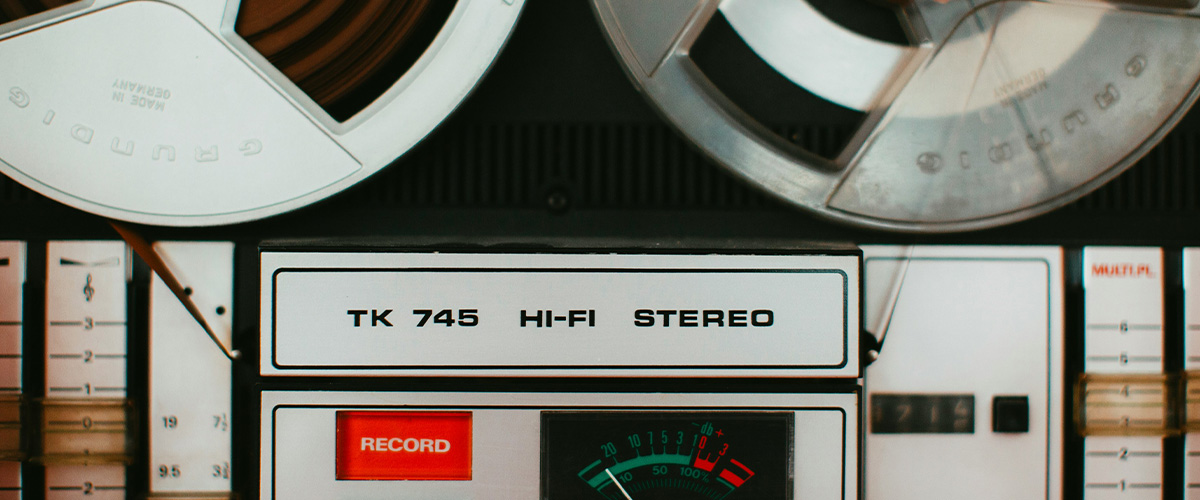
Mono signal
Mono is the abbreviation for monophonic (or monaural), the simplest definition of which is as follows: a "monophonic" signal is technically an audio signal broadcast on a single channel. This sound is generally recorded via a single microphone and can be retransmitted via one or more loudspeakers. The loudspeakers will then broadcast exactly the same signal, with a rendering that may be described by some as untextured or lacking in relief. Mono was used for a long time, before being gradually replaced by stereo. So why are some amplifiers today mono?
In the Hi-Fi world, processing a monophonic signal is really just a question of power and signal processing purity. In fact, the purpose will always be to listen to stereo sound, but the two channels will be processed independently. This is what we call a dual-mono installation. In other words, one amplifier processes the left channel signal, while a second processes the right. This results in a considerable gain in power and a clear increase in the purity of the final sound, since the channels cannot interfere with each other. Another application is often the driving of a subwoofer, since the subwoofer signal is processed separately via frequency filtering.
Example of a double mono system
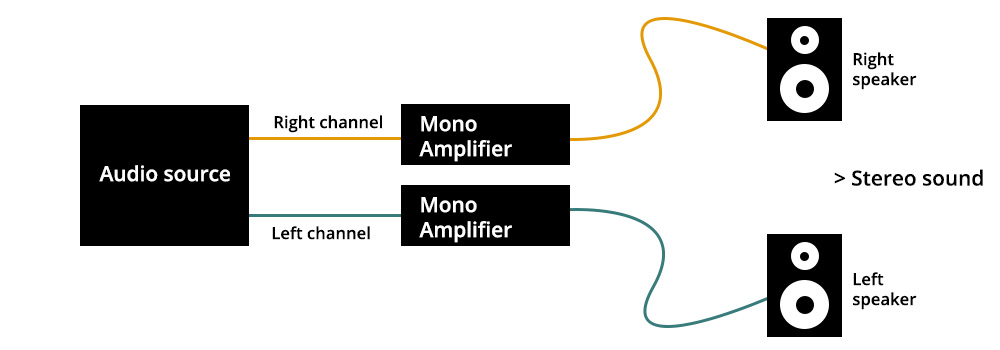
Our selection of Mono amplifiers
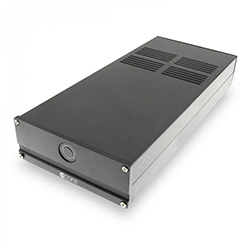
Audiophonics MPA-M250NC
Class D Mono Power Amplifier 1x250W 4 Ohm

Audiophonics MPA-M400NC
Class D Mono power amplifier 1x400W 4 Ohm
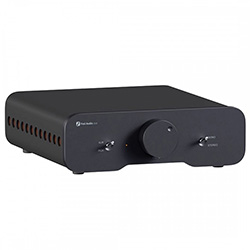
Fosi Audio ZA3
Stereo / Mono Class D amplifier 2x 150W 4 Ohm / 1x 240W 4 Ohm
Stereo signal
Stereophonic sound, as opposed to monophonic sound, is sound broadcast over two channels, with the aim of spatially reproducing the original recordings. In other words, stereo provides sound with relief, enabling the listener to locate sounds in space. In the Hi-Fi world, most amplifiers are stereo. As you can see, this is the norm. These are amplifiers that process two channels simultaneously for transmission to your loudspeakers. They feature analog RCA and XLR stereo inputs and outputs, processing both left and right channels.
Example of a classic stereo system
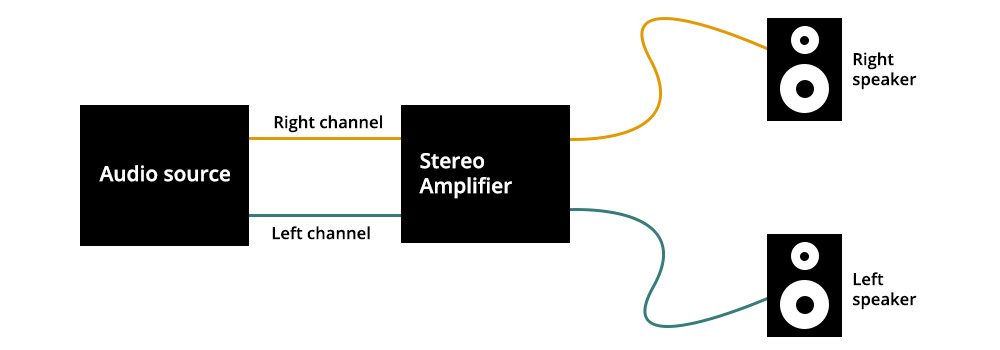
Our selection of stereo amplifiers
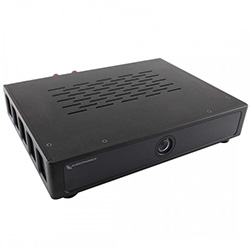
Audiophonics AP300-S125NC
Class D Stereo power amplifier 2x125W 4 Ohm
AP300-S125NC
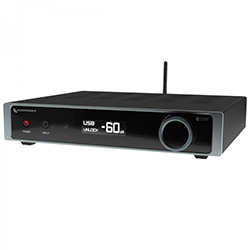
Audiophonics DA-S125NC
Integrated Class D amplifier 2x125W 4 Ohm DAC ES9038Q2M 32Bit 768kHz DSD256 Bluetooth 5.0
DA-S125NC
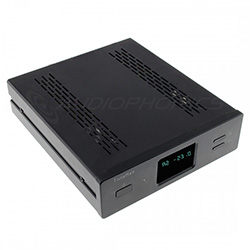
Silkline VIMI I
Class AB integrated amplifier 2x50W 4 Ohm (dual-mono architecture)
The difference between balanced and unbalanced audio signals
When it comes to audio signals, a general distinction is also made between balanced and unbalanced connections. Indeed, the cables used in your Hi-Fi installation can have an impact on the sound reproduction of your system. Technically, the difference lies in the number of conductors used to obtain a balanced or unbalanced signal. Unbalanced interconnect cables have only two conductors, ground and signal, while balanced cables have 3 conductors: a hot point, a cold point and ground. The most classic examples are RCA interconnect cables, which are unbalanced, and XLR interconnect cables, which are balanced.
Unbalanced mono and unbalanced stereo connections
As explained above, an unbalanced connection has only two conductors. The first for transmitting the audio signal in the form of electrical waves, and the second for ground, which provides a common reference point and eliminates interference. In this case, only one audio channel is transmitted, which is why two RCA cables are logically used in a Hi-Fi installation. However, there are other cables and connectors for transmitting an unbalanced stereo signal, such as headphone connectors and cables: 3.5mm jack and 6.35mm jack. This type of connection does feature 3 conductors - ground, right channel and left channel - but why is it often said that a symmetrical connection is preferable?
Although it features high-performance insulation and shielding layers that remedy most external EMI/RFI interference, an asymmetrical connection is not as effective as a symmetrical connection, which is better protected against interference. This is why, in the professional audio world, balanced connections are systematically preferred, especially for long-distance wiring. But be reassured, for a home Hi-Fi installation, RCA modulation cables are perfectly adequate and suitable.
Mono-balanced and stereo-balanced connections
The most basic example here is represented by XLR modulation cables, which are mono-balanced. This means that they have the ground, as well as the hot point that transmits the audio signal, and the cold point that transmits the signal, but with opposite polarity. It's this cold point that eliminates all interference in signal transmission, since when it arrives at a device, it is put back into phase and added to the signal from the hot point. As a result, parasites and interference are in phase opposition, and therefore eliminated. The same principle applies to stereo-balanced connectors and cables, such as 4.4mm balanced and 2.5mm balanced headphone cables, which process the left and right channels simultaneously.
Overall, the impact of a symmetrical connection on the sound reproduction of your Hi-Fi system is more precise and transparent, especially if your equipment uses a dual-mono internal architecture, with each channel featuring a dedicated processing chip, whether for amplification or digital/analog conversion, for example. The performance of your devices is thus enhanced significantly. Of course, for the results to be felt, the entire structure of your installation must be symmetrical, from the audio source to your loudspeakers. In fact, some devices are simply equipped with balanced converters at their outputs. If these converters are of poor quality, it's best to opt for an asymmetrical connection with high-quality cables.
Some basic definitions:
- Ground: This is defined as a common reference point in a circuit to which voltages are measured.
- Hot point / Cold point: The hot point is the connection used to conduct the original signal, while the cold point transmits the original signal but with its phase reversed in a balanced connection. Note that in an unbalanced connection, the cold point actually corresponds to the ground.
- EMI/RFI interference: This is electromagnetic or radioelectric interference generated by an external source that can disrupt the transmission of a signal, resulting in errors or loss of information.
- Shielding: A cable's shield is a protective envelope that protects the conductors from leakage and noise (EMI/RFI interference).
- Insulation : Insulation is a non-conductive protection that prevents the passage of current to the outside.
Transmission diagram for an unbalanced signal
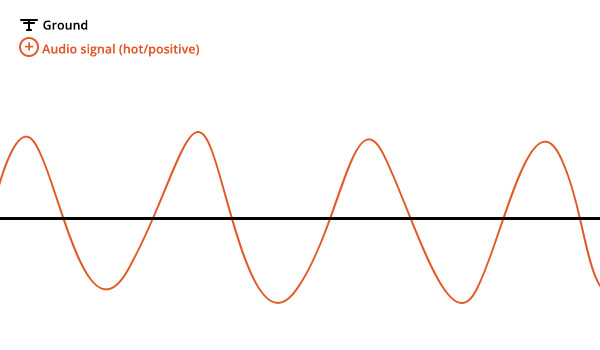
Balanced signal transmission diagram
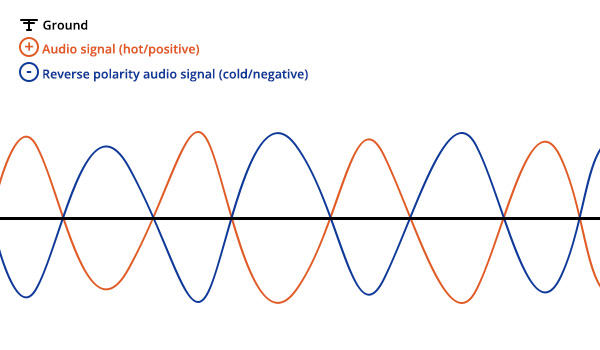
Our selection of modulation cables and unbalanced connectors
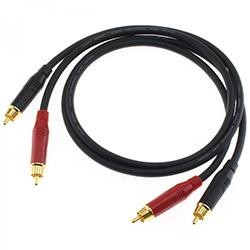
Audiophonics Wire RCA
Stereo RCA interconnect cables Gold-plated OFC Copper 75cm
wire RCA
Our selection of balanced interconnect cables and connectors
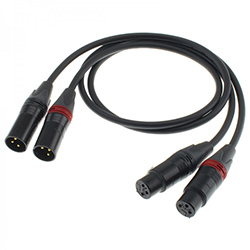
Audiophonics Wire XLR
Stereo XLR interconnect cable OFC Copper 75cm
wire xlr
Rechercher dans le blog
Blog categories
Latest Comments
Audiophonics Team
on DIY Tutorial - PiCorePlayer - Installing...Pierre Bommel
on Lecteur réseau Opensource : SolutionsPierre Bommel
on DIY Tutorial - PiCorePlayer - Installing...Audiophonics Team
on Tutorial DIY - Power cable ELECAUDIO CS-331B

